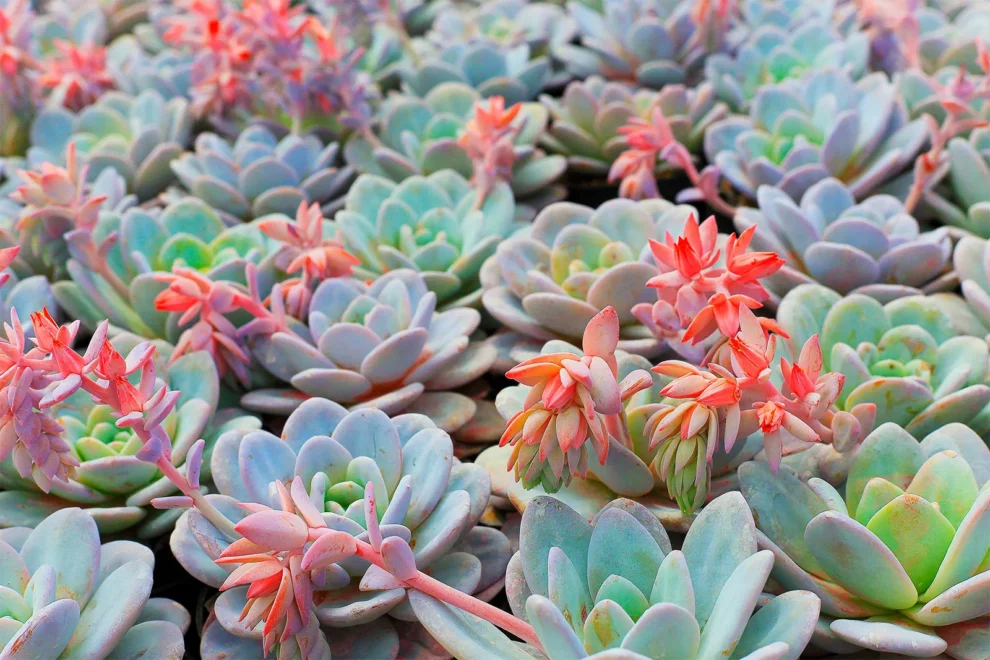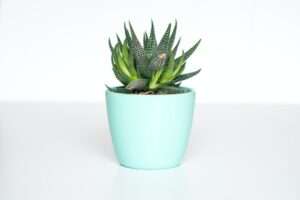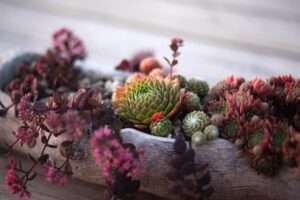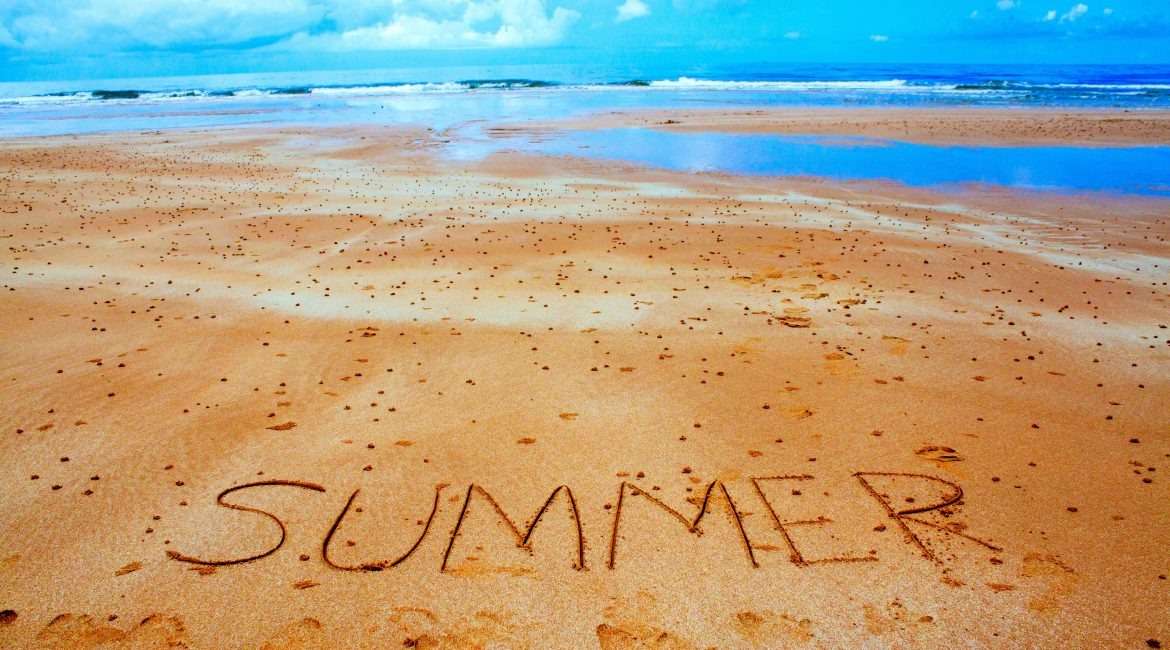
Succulent plants are a type of plant that have thick, fleshy leaves and stems that store water. They are known for their ability to survive in arid conditions and are often found in desert regions. Succulents come in a variety of shapes, sizes, and colors, making them popular choices for indoor and outdoor gardens.
One of the main characteristics of succulent plants is their ability to store water in their leaves and stems. This allows them to survive in dry environments where water is scarce. The fleshy leaves and stems also help to prevent water loss through evaporation.
There are many different types of succulent plants, each with its own unique characteristics. Some popular types include aloe vera, jade plant, echeveria, and haworthia. These plants vary in size, shape, and color, but all share the common trait of being able to store water.
Understanding the Natural Life Cycle of Succulent Leaves
To understand why succulent leaves may be lost, it is important to understand the natural life cycle of these plants. Succulents have a unique growth cycle where new leaves are constantly being produced while older leaves die off.
New leaves are typically produced at the center of the plant and gradually grow outward. As the new leaves grow, older leaves at the outer edges of the plant may start to wither and die. This is a natural process and should not be cause for concern.
Understanding this natural life cycle is important because it helps to differentiate between normal leaf loss and potential issues that may be causing excessive leaf loss.
Overwatering and Its Effects on Succulent Leaves
Overwatering is one of the most common mistakes made when caring for succulent plants. Signs of overwatering include yellowing or wilting leaves, mushy or rotting stems, and a foul smell coming from the soil.
When succulent plants are overwatered, their roots become waterlogged and are unable to absorb oxygen. This can lead to root rot, which is a serious condition that can cause the plant to die. Overwatering can also cause the leaves to become soft and mushy, making them more susceptible to disease and pests.
To prevent overwatering, it is important to allow the soil to dry out completely between waterings. Succulents are adapted to survive in dry conditions and do not require frequent watering like other types of plants. It is also important to use well-draining soil and pots with drainage holes to prevent water from pooling around the roots.
Underwatering and Its Effects on Succulent Leaves
While overwatering is a common issue, underwatering can also be detrimental to succulent plants. Signs of underwatering include shriveled or wrinkled leaves, dry soil, and a lack of new growth.
When succulent plants are underwatered, they are not receiving enough water to sustain their growth and health. This can cause the leaves to become dehydrated and shriveled. Underwatered succulents may also go into a state of dormancy, where they stop growing and conserve energy until they receive adequate water.
To prevent underwatering, it is important to water succulent plants thoroughly when the soil is completely dry. This allows the water to penetrate deep into the roots and ensures that the plant receives enough moisture. It is also important to provide adequate sunlight for succulents, as this helps them to photosynthesize and produce energy.
Sunburn and Its Effects on Succulent Leaves
Succulent plants are adapted to thrive in sunny environments, but too much direct sunlight can cause sunburn. Signs of sunburn in succulent plants include brown or yellow spots on the leaves, wilting or drooping leaves, and a bleached appearance.
When succulent plants are exposed to intense sunlight for extended periods of time, the leaves can become damaged. This is because succulents have a thick outer layer of tissue that protects them from excessive water loss. However, this outer layer can also be damaged by intense sunlight, leading to sunburn.
To prevent sunburn, it is important to provide succulent plants with the right amount of sunlight. Most succulents thrive in bright, indirect light, but some can tolerate more direct sunlight. It is important to research the specific light requirements of each type of succulent and provide them with the appropriate amount of light.
Pest Infestations and Their Effects on Succulent Leaves
Succulent plants are not immune to pest infestations, and there are several common pests that can affect them. Some common pests that affect succulent plants include mealybugs, aphids, and spider mites.
Pest infestations can cause damage to succulent leaves by feeding on the plant’s sap or by spreading diseases. Signs of pest infestations include small insects or webs on the leaves, yellowing or wilting leaves, and stunted growth.
To prevent pest infestations, it is important to regularly inspect succulent plants for signs of pests and take action immediately if any are found. This can include manually removing pests, using organic insecticides or pesticides, or introducing natural predators such as ladybugs or lacewings.
Fungal Infections and Their Effects on Succulent Leaves
Fungal infections are another common issue that can affect succulent plants. Some common fungal infections that affect succulent plants include powdery mildew, root rot, and black spot.
Fungal infections can cause damage to succulent leaves by causing them to become discolored, wilted, or distorted. Fungi thrive in moist environments, so overwatering or high humidity levels can increase the risk of fungal infections.
To prevent fungal infections, it is important to provide succulent plants with proper air circulation and avoid overwatering. It is also important to remove any infected leaves or plants to prevent the spread of the infection.
Nutrient Deficiencies and Their Effects on Succulent Leaves
Succulent plants require certain nutrients to grow and thrive, and deficiencies in these nutrients can cause damage to their leaves. Some common nutrient deficiencies in succulent plants include nitrogen, phosphorus, and potassium deficiencies.
Nutrient deficiencies can cause succulent leaves to become discolored, stunted, or distorted. They can also weaken the plant’s immune system, making it more susceptible to pests and diseases.
To prevent nutrient deficiencies, it is important to provide succulent plants with a balanced fertilizer that contains the necessary nutrients. It is also important to ensure that the soil is well-draining and that the pH level is appropriate for succulent plants.
Physical Damage and Its Effects on Succulent Leaves
Physical damage can occur to succulent plants in a variety of ways, including from accidental bumps or falls, improper handling, or from being exposed to extreme temperatures. Common causes of physical damage in succulent plants include broken or torn leaves, bruised stems, and snapped branches.
Physical damage can cause succulent leaves to become discolored, wilted, or deformed. It can also create openings for pests or diseases to enter the plant.
To prevent physical damage, it is important to handle succulent plants with care and avoid placing them in areas where they are likely to be bumped or knocked over. It is also important to protect succulents from extreme temperatures by providing them with adequate shade or insulation during hot or cold weather.
Best Practices for Preventing Succulent Leaf Loss and Promoting Healthy Growth
To maintain healthy succulent plants and prevent leaf loss, there are several best practices that can be followed. These include:
1. Providing the right amount of water: Succulents should be watered thoroughly when the soil is completely dry, and excess water should be allowed to drain away.
2. Providing the right amount of sunlight: Most succulents thrive in bright, indirect light, but some can tolerate more direct sunlight. It is important to research the specific light requirements of each type of succulent and provide them with the appropriate amount of light.
3. Using well-draining soil: Succulents require well-draining soil to prevent water from pooling around the roots. It is important to use a soil mix specifically designed for succulent plants or to amend regular potting soil with perlite or sand.
4. Avoiding overfertilization: Succulents do not require frequent fertilization and can be easily burned by excessive amounts of fertilizer. It is important to follow the recommended dosage on the fertilizer package and to fertilize only during the growing season.
5. Regularly inspecting for pests and diseases: Succulent plants should be regularly inspected for signs of pests or diseases, and action should be taken immediately if any are found. This can include manually removing pests, using organic insecticides or pesticides, or introducing natural predators.
Conclusion:
Understanding the causes of succulent leaf loss is essential for maintaining healthy plants. Overwatering, underwatering, sunburn, pest infestations, fungal infections, nutrient deficiencies, and physical damage can all contribute to leaf loss in succulent plants. By following best practices such as providing the right amount of water and sunlight, using well-draining soil, regularly inspecting for pests and diseases, and preventing physical damage, succulent plants can thrive and maintain their beautiful leaves.
If you’re wondering why your succulent leaves are falling off, you might find this article on GirlsGist helpful. It provides insights and tips on how to care for succulents and prevent leaf drop. Check it out here.

















Add Comment